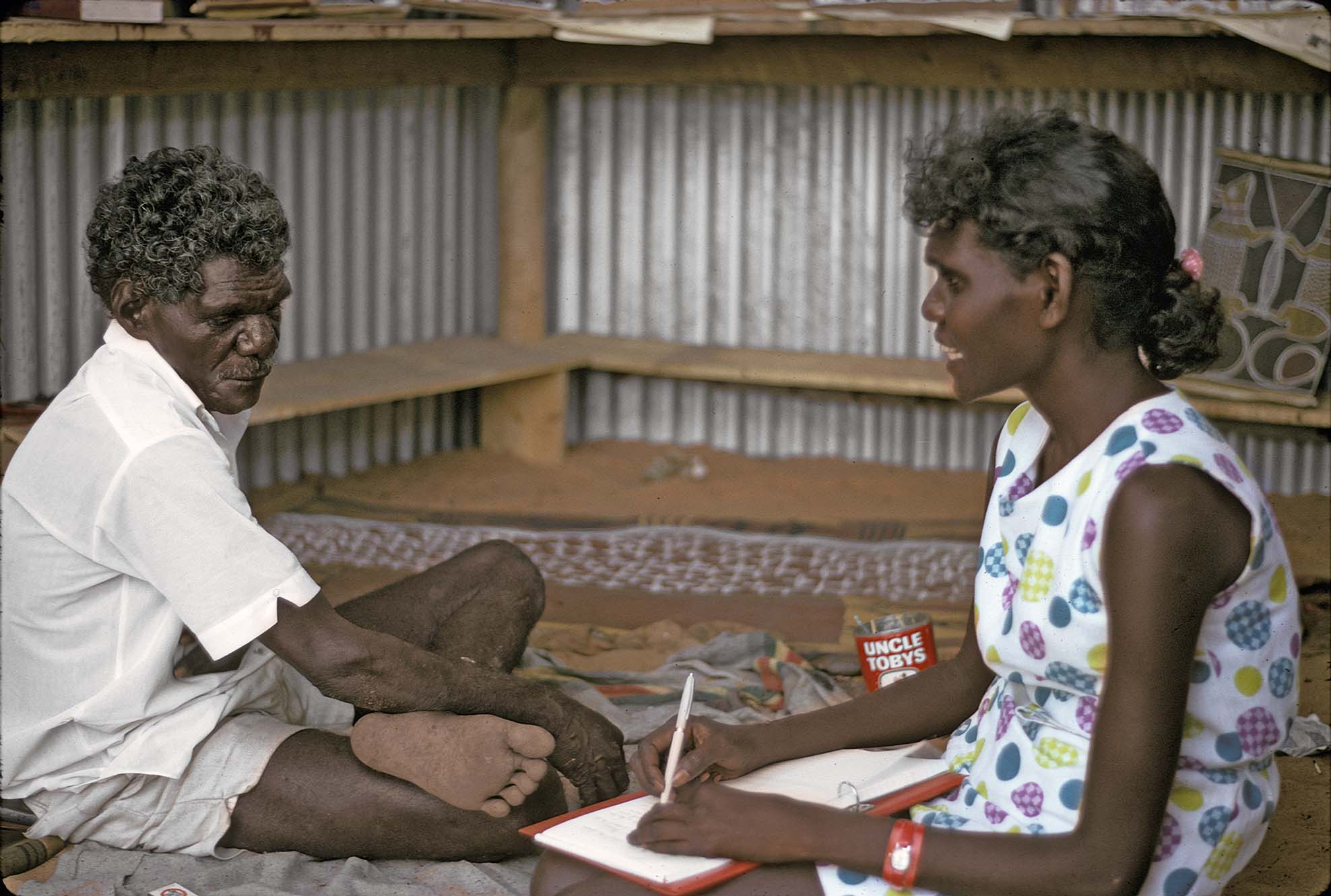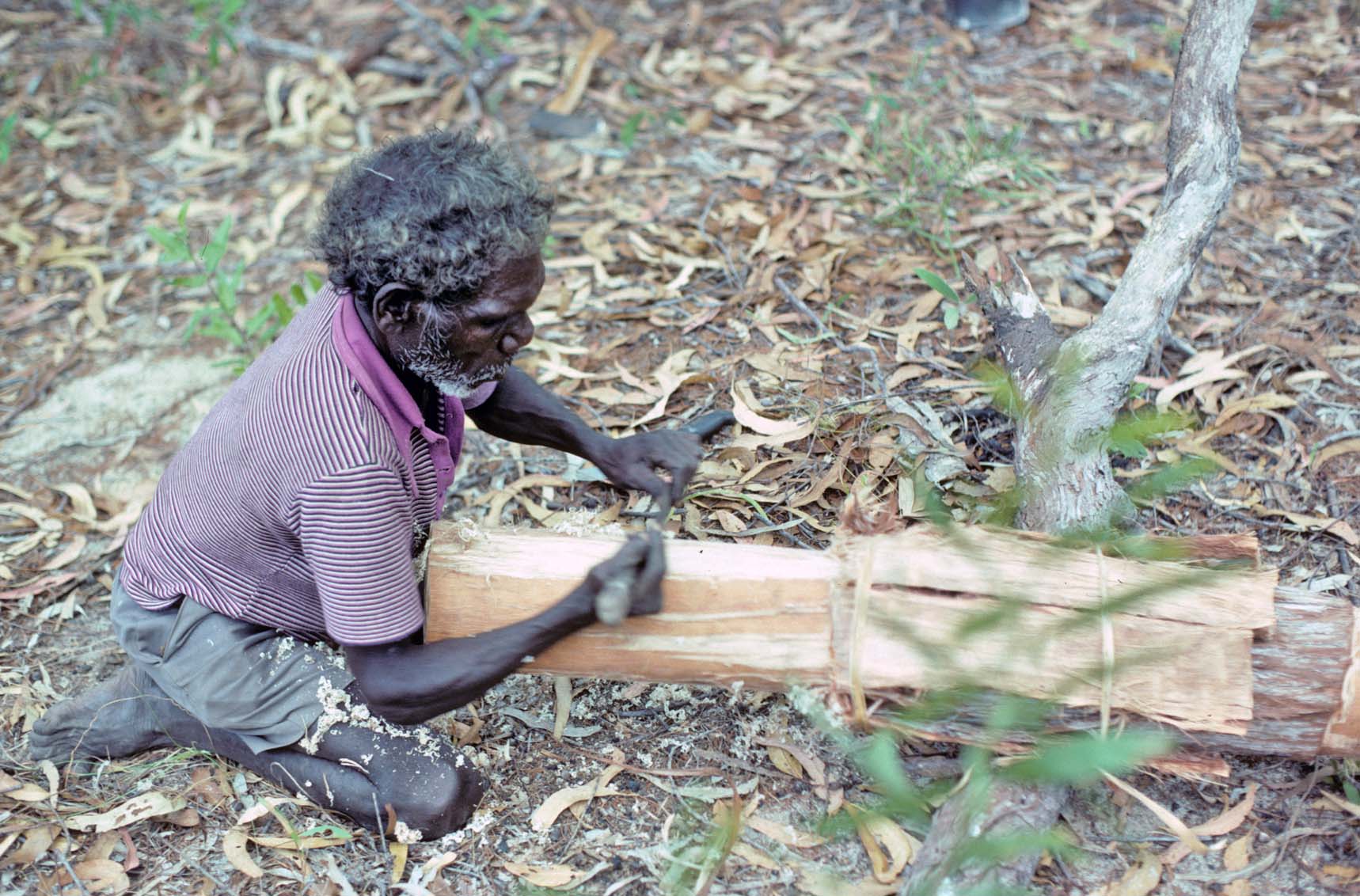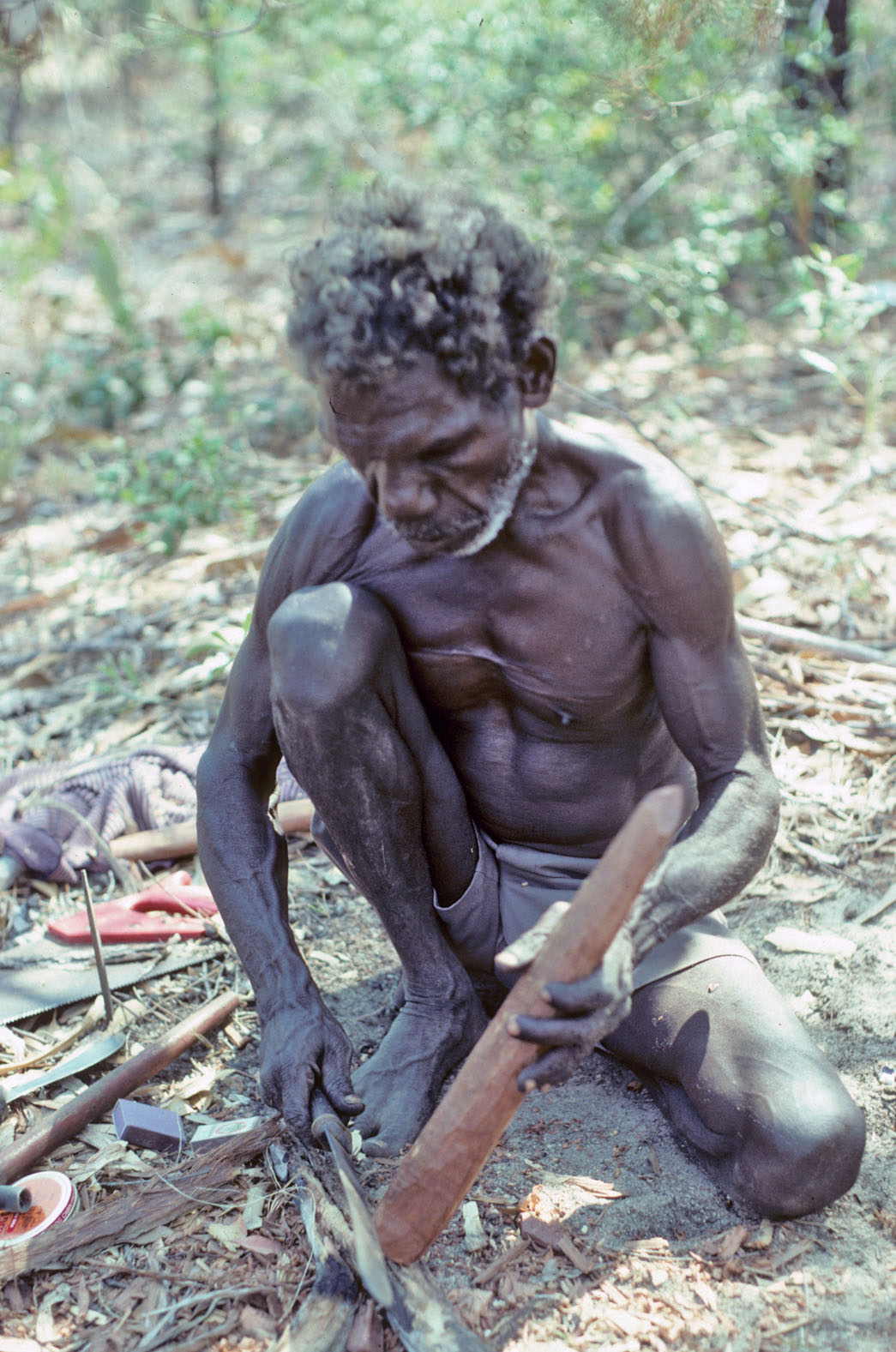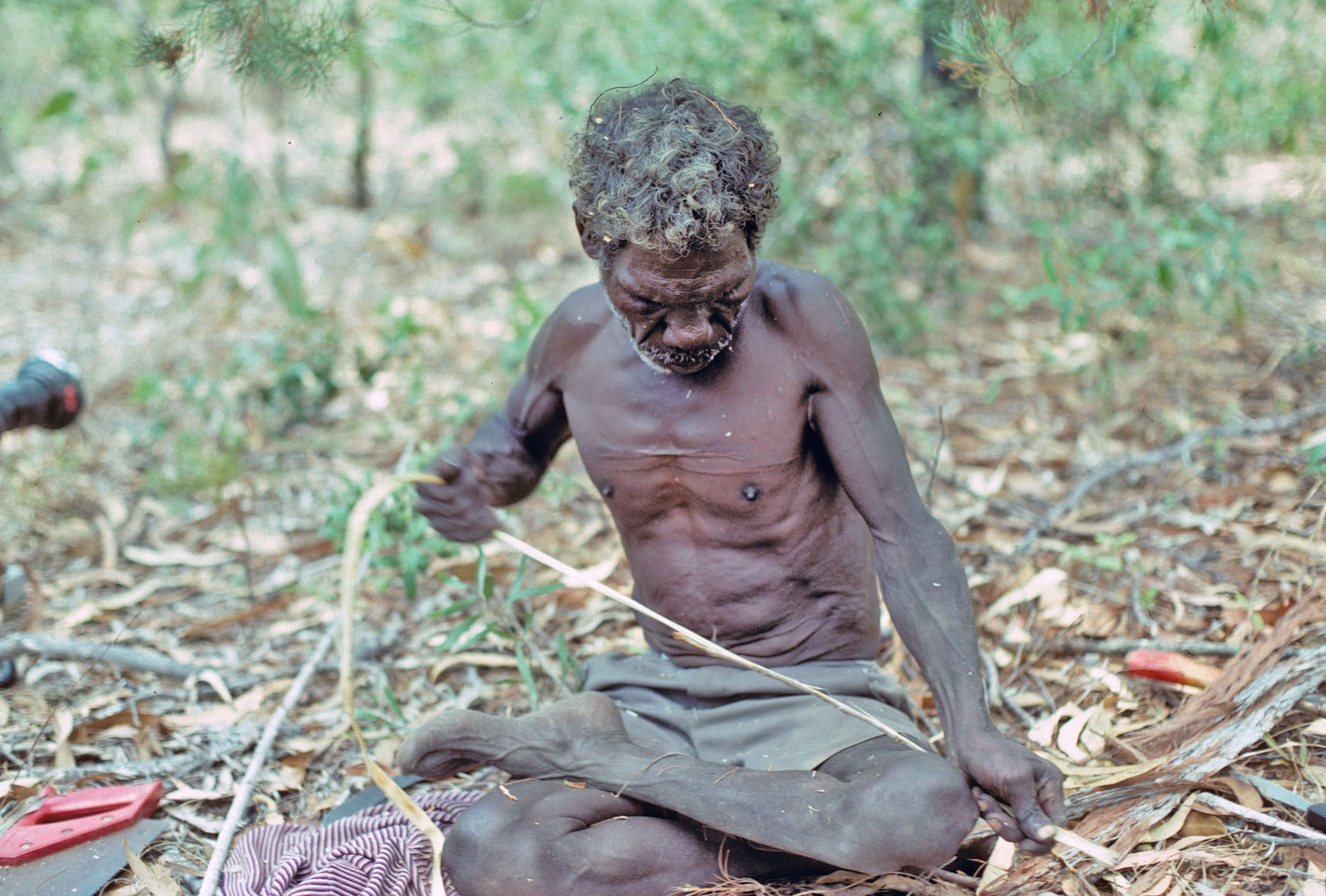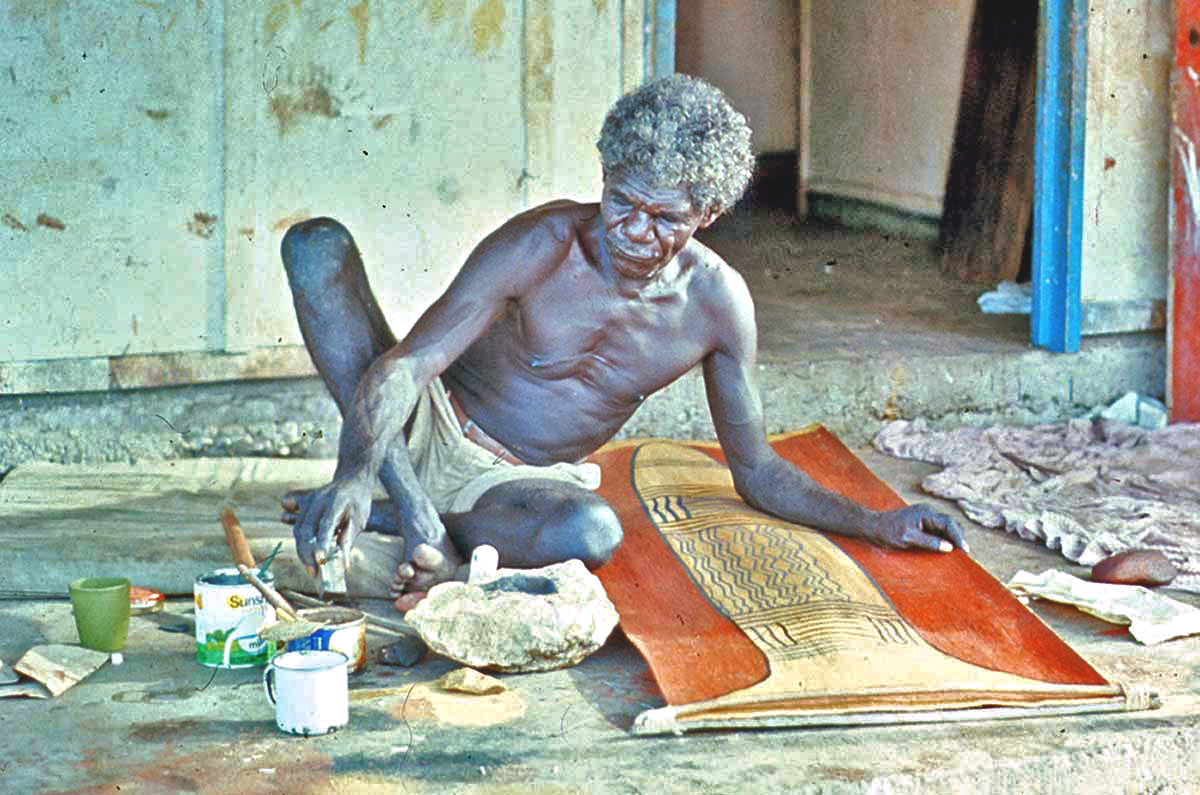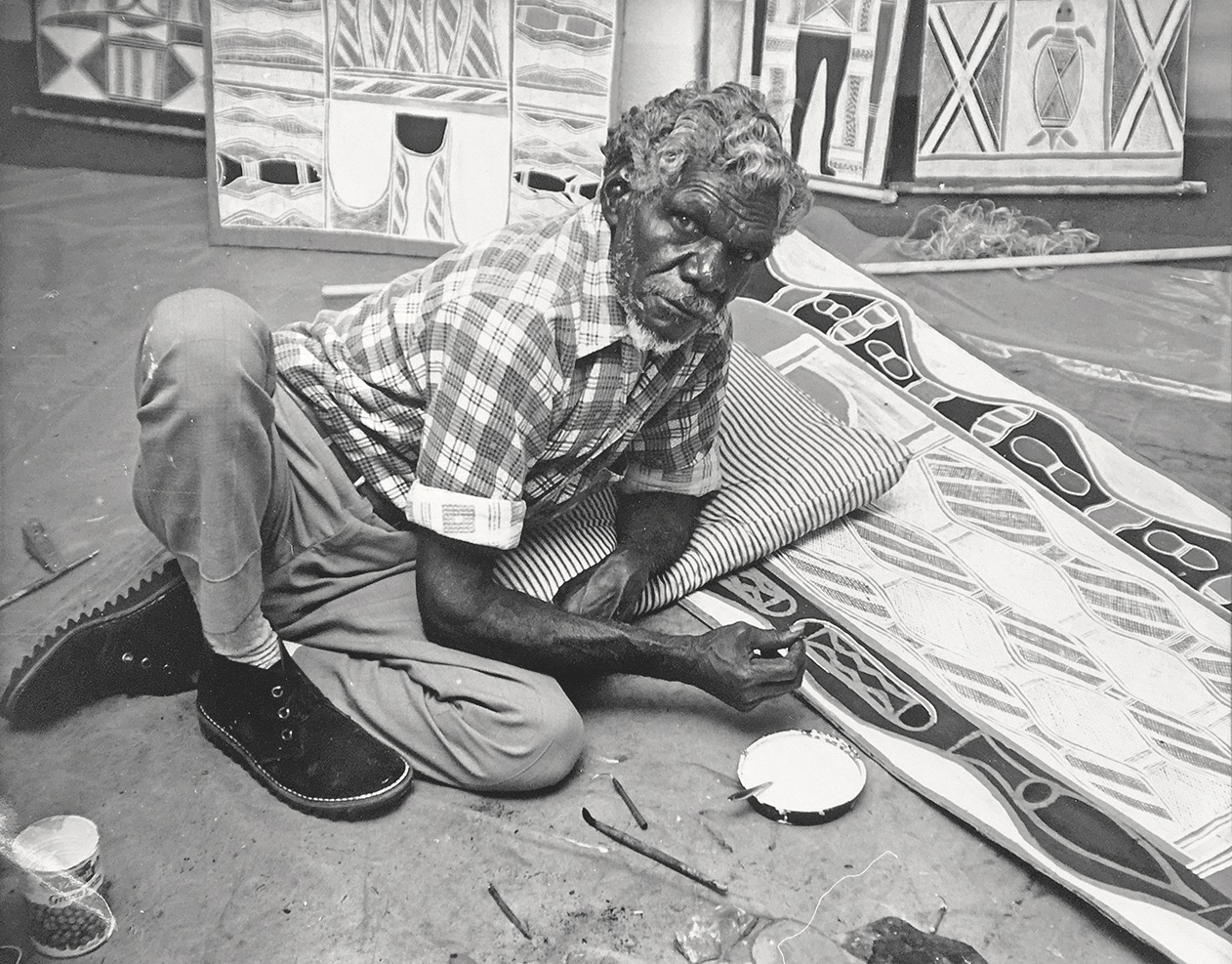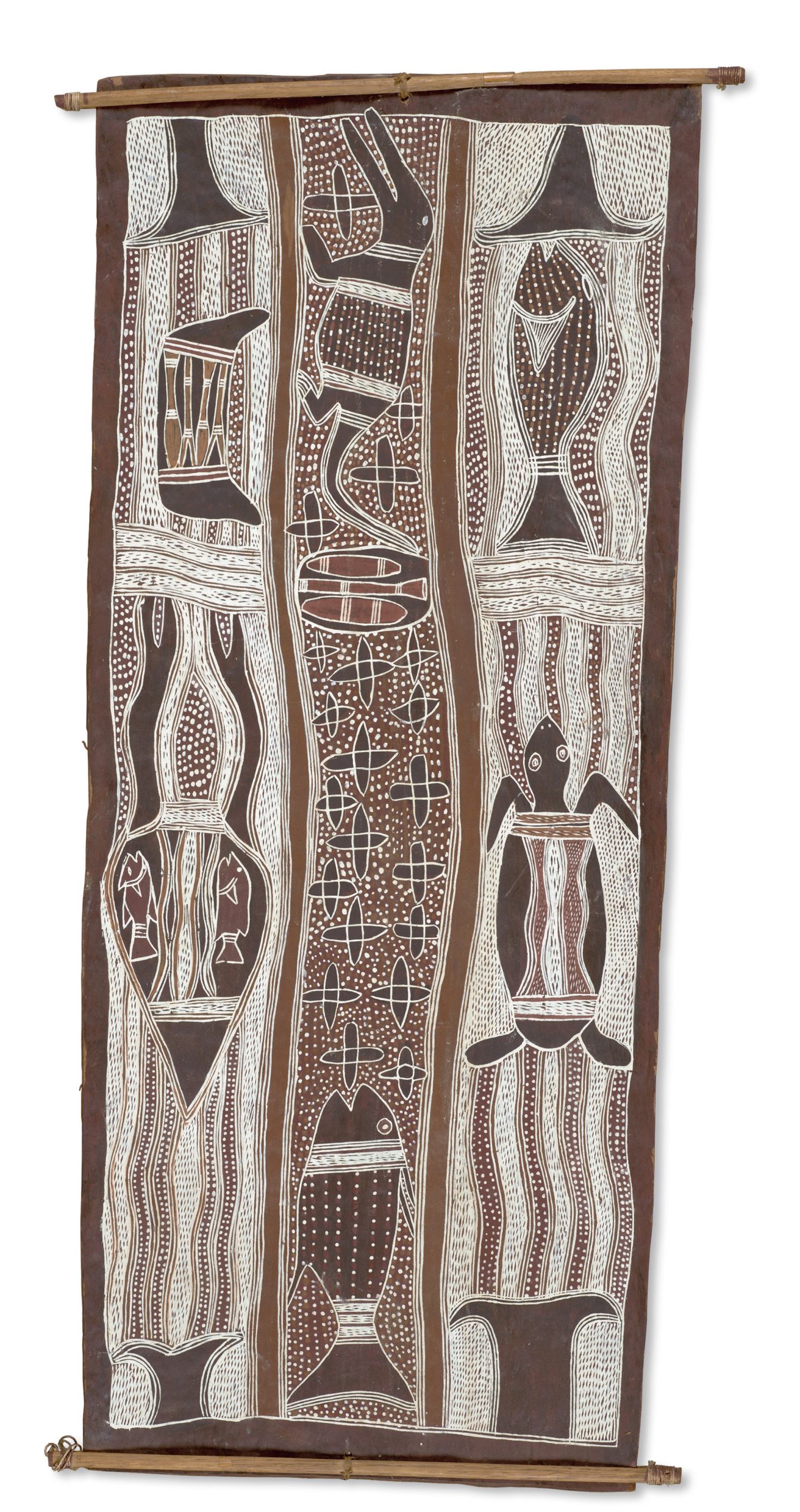
"If you look into the sky at night you will see the Milky Way. It is like a river of stars. These stars are all the people, animals, birds and fish that have died. They have been taken into the sky and changed into stars. Just below the Milky Way you will see the Southern Cross. This is Yiŋalpiya, the friendly crocodile. Near the Southern Cross you will see two very bright stars. These bright stars are Munuminya and Yikawaŋa (the two Koel ancestors). They are always close to their friend Yiŋalpiya the crocodile, and the point to Milŋiyawuy, the river of stars. "
– NARRITJIN MAYMURU
More Info
Narritjin Maymuru was a prolific artist who also produced many paintings of Milŋiyawuy. In these works, the central section comprises a cluster of stars framed by wavy lines that represent the margins of the river, both in the sky and on earth. On either side, the constellations of Milŋiyawuy appear in figurative form. The central figure contained within symmetrically opposed wavy lines is a Maŋgalili clan design. It represents, among other things, the ŋaraka (bones) of the clan—its permanent, everlasting core. The design can be painted on the body of a boy during his circumcision ceremony or on the body or coffin lid of a dead person, connecting their spirit to the Waŋarr (ancestral beings) associated with the clan. Yolŋu cosmology centers on the relationship between the ancestral and lived worlds, reproduced through a cyclical spiritual temporality. People are born of birrimbirr (conception spirits) emanating from their clan’s ancestral beings, which are imminent in certain powerful places in the landscape—djalkiri (foundational places)—where the ancestral forces are concentrated. On death, one dimension of birrimbirr returns to the djalkiri place, while another becomes visible in the sky at night. Nami uses the word mali (reflection, shadow, image) to describe this manifestation. Milŋiyawuy connotes this complex spatio-temporal process, in which the person is first in a state of coming into being and then finally fades out of corporeal existence.
– Howard Morphy with Naminapu Maymuru-White and Frances Morphy
Additional Information
Decade
1975
Medium
Natural pigments on eucalyptus bark
Dimensions (IN)
47 ¼ x 20 ¼
Dimensions (CM)
120 x 51.5
Credit
Museum and Art Gallery of the Northern Territory. Gift of the Department of Aboriginal Affairs, Abart-0162.
Narrative
Maŋgalili
The Maŋgalili clan belongs to the Yirritja moiety. Their major spiritual theme revolves around the...
Songline
Milŋuyawuy | The Milky Way
Munuminya and Yikawaŋa went hunting for fish in the river Milmooya. They made a canoe,...
Location
1970s
After the hard-fought legal battles of the previous decade, the 1970s saw the first victories...
About The Artist(s)
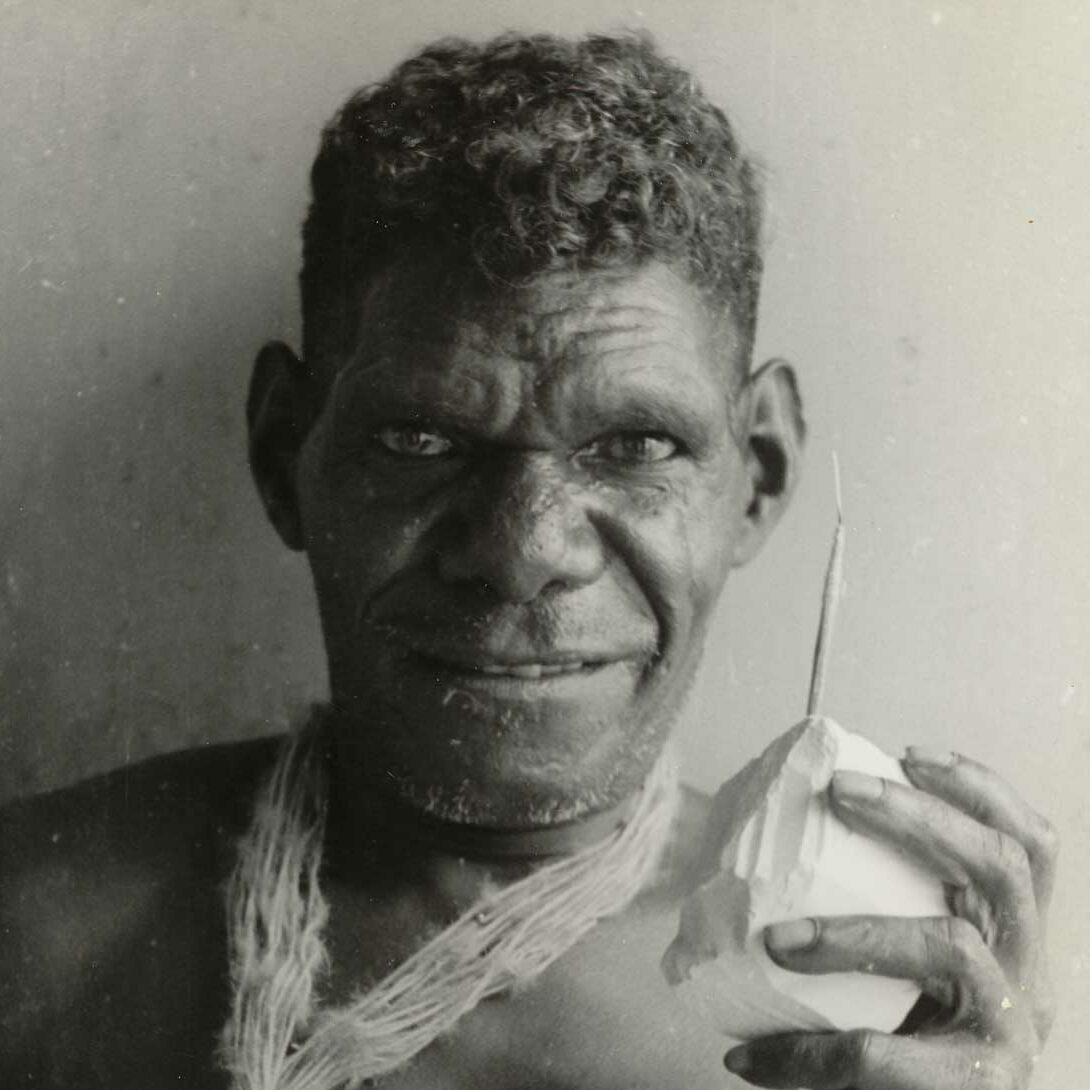
Clan
Maŋgalili
Artist Dates
c.1916-1981
Alternative Names
Naridjin, Naritjin, Narridjin, Ngaradjin
Narritjin Maymuru
Narritjin Maymuru was one of the most significant figures in the development of the painting movement at Yirrkala. The driving force behind the Yirrkala Church Panels, he actively encouraged art making as a means of economic development, which would lead to the foundation of the Yirrkala Art Center in 1976. Along with Mawalan Marika, Narritjin was one of the first men to teach his daughters to paint. In 1978, he was awarded a Creative Arts Fellowship from the Australian National University.
Collections Represented
Art Gallery of New South Wales
Art Gallery of Western Australia
Art Gallery of South Australia
Kluge-Ruhe Aboriginal Art Collection of the University of Virginia


